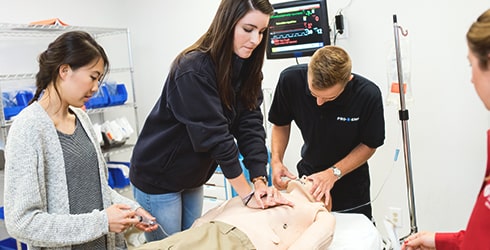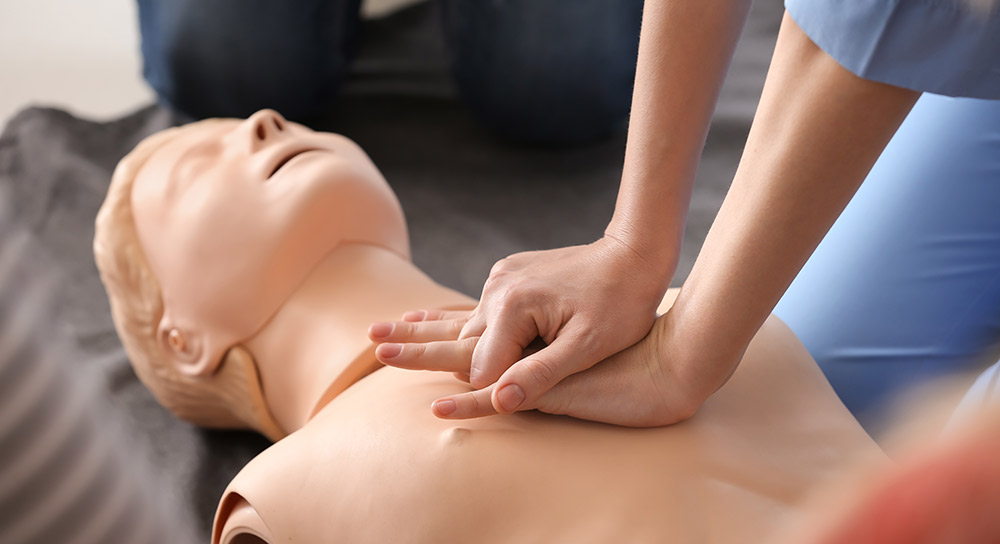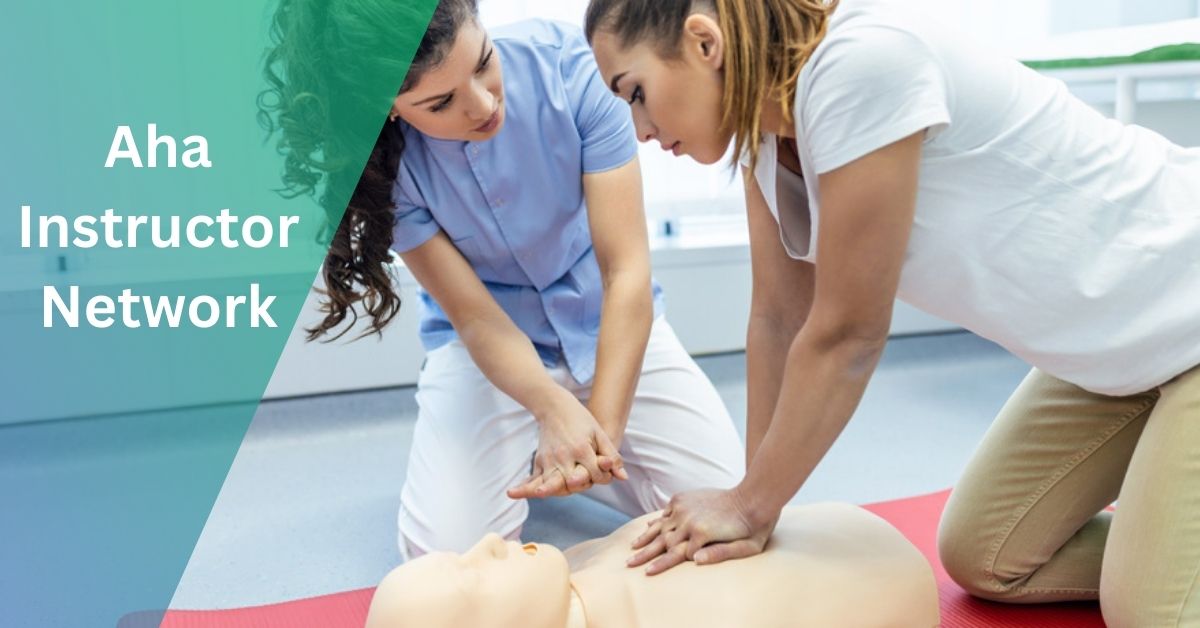Join the AHA Instructor Network and help save lives in your community. Learn to teach CPR, first aid, and advanced heart care, and make a real difference in healthcare.
The AHA Instructor Network is a platform where healthcare professionals can become certified instructors in CPR and other life-saving techniques. It offers training and a supportive community for teaching essential skills.
This article discusses the AHA Instructor Network’s role in providing healthcare professionals with certification and training in life-saving techniques like CPR first aid.
What Is Aha Instructor Network – Here To Know!
The AHA Instructor Network is a platform where people can learn to teach others important life-saving skills. It’s run by the American Heart Association (AHA).
On this network, individuals can become certified instructors in CPR, first aid, and advanced cardiovascular care. Being part of the network means you’ll receive training and resources to help you teach these skills effectively.
The network is a vital resource for healthcare professionals and anyone interested in promoting safety and well-being. It’s a way to empower people to make a positive impact and contribute to better healthcare outcomes in their communities.
1. Purpose And Objectives To Teach:

The purpose of teaching through the AHA Instructor Network is to equip people with life-saving skills like CPR, first aid, and advanced cardiovascular care.
The objective is to empower people to respond effectively during emergencies, potentially saving lives. By becoming certified instructors, individuals can spread this essential knowledge in their communities, promoting safety and well-being for all.
2. Membership Benefits:
By joining the AHA Instructor Network, people gain access to exclusive resources and support for teaching life-saving techniques.
They receive ongoing training opportunities and updates on best practices in healthcare education. Members also become part of a community dedicated to promoting safety and preparedness in their local areas.
Aha Certification Programs – Take Analysis One By One!
AHA Certification Programs offer training in crucial life-saving skills like CPR, first aid, and advanced cardiovascular care. These programs are designed by experts at the American Heart Association (AHA) to ensure high-quality instruction.
Participants learn how to respond effectively during emergencies, potentially saving lives. The courses include subjects like identifying cardiac arrest, performing CPR, and utilizing automated external defibrillators (AEDs).
AHA Certification Programs are widely recognized and respected in the healthcare field, enhancing participants’ credentials and employability.
Upon completion, people receive certification, demonstrating their proficiency in life-saving techniques. These programs are essential for healthcare professionals, educators, and anyone interested in making a positive impact in emergencies.
How To Become An Aha Certified Instructor – Learn More!

They must complete an Instructor Essentials course covering teaching methodologies and AHA guidelines. After completing these courses, individuals must be monitored by an AHA Training Center faculty member while teaching their first course.
Finally, they must successfully demonstrate their teaching skills and knowledge to become certified. Once certified, instructors can teach AHA courses and share life-saving skills with others in their communities.
1. Eligibility Criteria:
To be eligible to become an AHA Certified Instructor, people typically need to have completed relevant provider courses, such as CPR or first aid.
They should demonstrate proficiency in the skills they want to teach. Additionally, they may need to complete an Instructor Essentials course to learn teaching methodologies and AHA guidelines.
2. Instructor Training Process:
It involves completing an Instructor Essentials course where people learn teaching techniques and AHA guidelines. They also undergo practical training sessions to hone their teaching skills.
After completing the course, an AHA Training Center Faculty member may need to monitor individuals while teaching their first class. Finally, they must successfully demonstrate their ability to teach life-saving techniques to become certified instructors.
Read: Fotyomaç – A Brief Overview!
Professional Development Opportunities With Aha Certification – You Should Know!
Obtaining AHA certification opens up various professional development opportunities. Certified individuals can advance their careers in healthcare by demonstrating their proficiency in life-saving techniques like CPR and first aid.
Additionally, AHA certification enhances credibility and trustworthiness among peers and employers. Certified individuals may also pursue further specialization in advanced cardiovascular care or become instructors themselves, imparting life-saving knowledge to others.
Aha Instructor Network: Market Analysis – Don’t Miss Them!

In the AHA Instructor Network’s market analysis, trends in healthcare education and certification are examined. This involves observing shifts in demand for specific training programs and the adoption of emerging technologies in instructional design.
Additionally, competitor strategies in certification programs are closely studied, including their marketing approaches and promotional activities.
Understanding these market dynamics helps the AHA Instructor Network stay competitive and relevant. By staying informed about industry trends and competitor actions, the network can adapt its strategies to better serve healthcare professionals and learners.
Using Technology In Aha Training – Take A Look Over Them!
AHA training involves incorporating tools like computers, smartphones, and online platforms to teach life-saving skills such as CPR and first aid.
This can include interactive online courses, virtual simulations, and mobile applications that guide users through emergency scenarios.
By using technology, AHA training becomes more engaging, accessible, and convenient for learners of all ages and backgrounds.
It also allows for flexible learning schedules and enables individuals to practice skills in a safe virtual environment before applying them in real-life situations.
Additionally, technology integration enhances the effectiveness of training by providing instant feedback and personalized learning experiences tailored to individual needs.
Overall, leveraging technology in AHA training enhances skill acquisition and promotes better preparedness for emergencies.
Ensuring Quality And Compliance In Aha Instructor Network – Most Interesting One!

Quality and compliance in the AHA Instructor Network means making sure that the training programs meet high standards and follow all the rules. This involves regularly checking that the courses are up-to-date and aligned with industry guidelines.
It’s important to adhere to regulations set by relevant authorities to maintain credibility and trust. By doing this, it ensures that learners receive reliable and effective training in life-saving techniques like CPR and first aid.
Additionally, monitoring and auditing procedures are in place to identify any areas for improvement and address them promptly.
This commitment to quality and compliance helps uphold the reputation of the AHA Instructor Network and ensures the safety of those receiving training.
Read: NNESI Reviews – What You Need To Know Before You Shop!
Frequently Asked Questions:
1. Can I become an AHA Certified Instructor if I’ve never taken a CPR or first aid course before?
No, to become an AHA Certified Instructor, you typically need to have completed relevant provider courses, such as CPR or first aid, before enrolling in an Instructor Essentials course.
2. How long does it take to complete the AHA Instructor training process?
The duration of the AHA Instructor training process varies depending on factors such as course availability and individual learning pace. It involves completing provider and Instructor Essentials courses followed by instructor training and evaluation.
3. Is there a fee associated with becoming an AHA Certified Instructor?
Enrolling in AHA courses, including provider and Instructor Essentials courses, is typically a fee. There may be costs for materials and certification. However, specific fees can vary depending on the training centre and location.
4. Can I teach AHA courses outside of the United States if I become a certified instructor?
Yes, AHA Certified Instructors can teach AHA courses internationally. However, it’s essential to ensure that the courses meet local regulations and standards. Additionally, instructors may need to obtain additional certifications or permissions.
Conclusion:
In summary, the AHA Instructor Network offers healthcare professionals certification in CPR and other life-saving techniques through comprehensive training programs, equipping them with essential skills.
Read:



